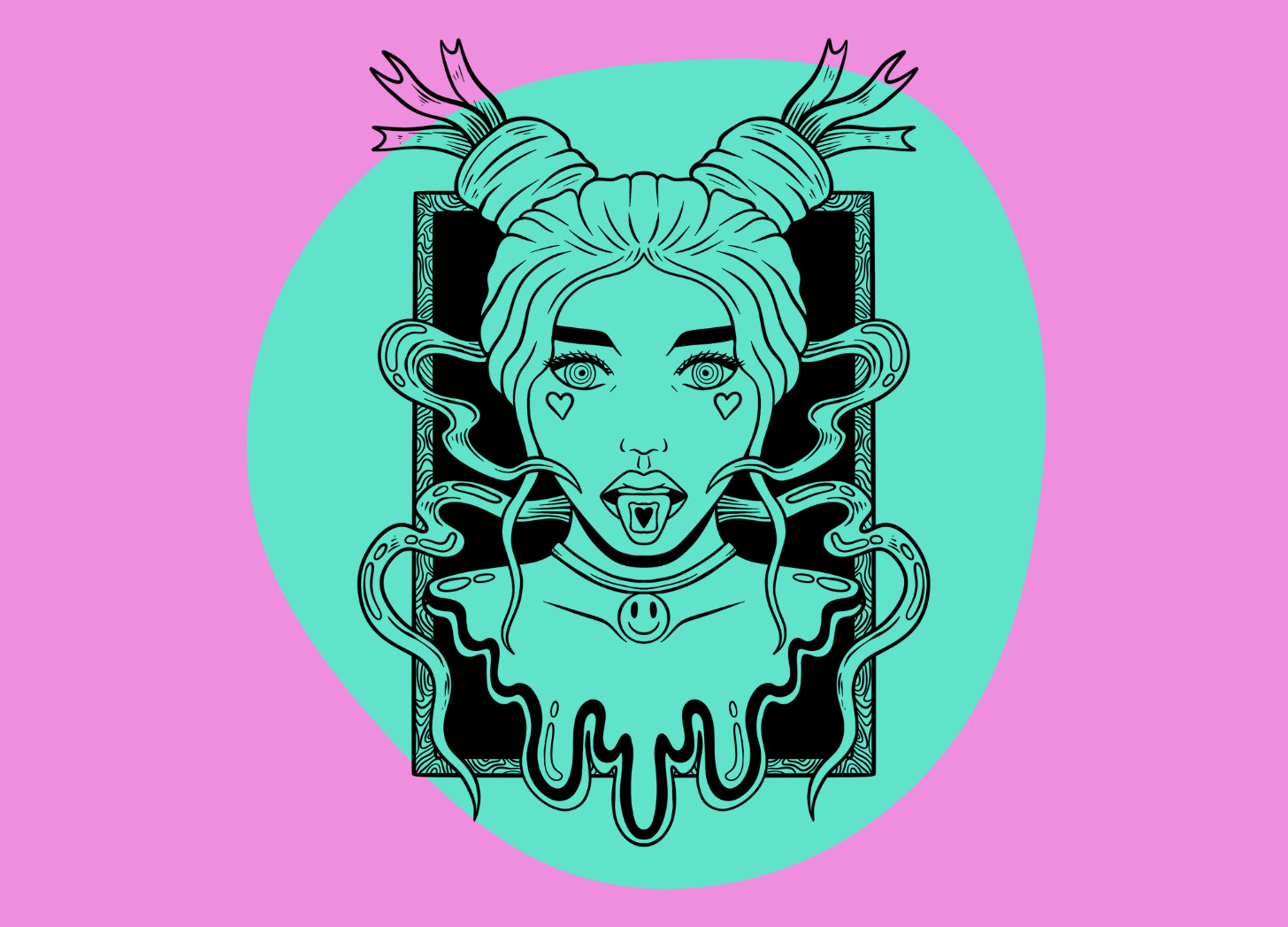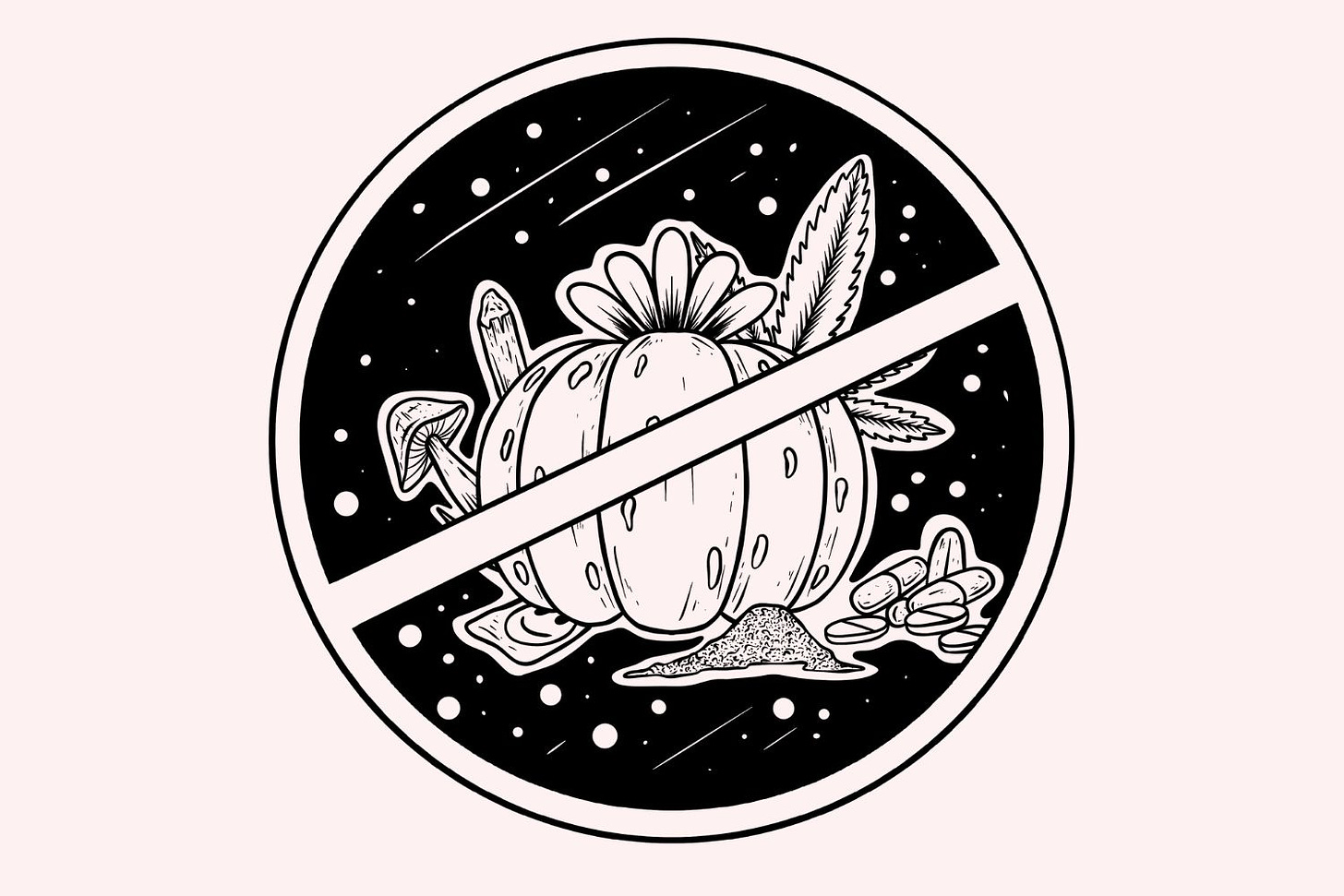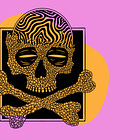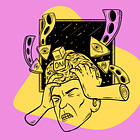Don't Drink The Electric Kool-Aid: The Acid Ban Explained 🍹🌈
Buckle up! The LSD prohibition rabbit hole runs deep 🐰
Lysergic acid diethylamide (LSD) is illegal in most parts of the world and is classified as a Schedule I drug by the UN Convention of Psychotropic Substances (1971).
Schedule I drugs are deemed to have “no currently accepted medical use and a high potential for abuse.”
Also in this category are marijuana, ecstasy, heroin, and meth.
Paradoxically, LSD and other tryptamine psychedelics are now at the forefront of modern treatments for a gamut of psychiatric conditions — including anxiety, addiction, depression, obsessive-compulsive disorder, and post-traumatic stress disorder.
Even before it was banned in 1967, LSD was proven to be successful in clinical settings for treating psychiatric conditions — without the risk of any serious physical side effects.
Just when scientists thought LSD could revolutionize mental health, Richard Nixon went and “peed in the psychedelic punch bowl” — so to speak.
Here’s what happened.
The Story Starts in 1937
LSD’s fascinating history began with its discovery in 1937 when Swiss biochemist Albert Hofmann synthesized the alkaloid while working for Sandoz Pharmaceutical.
Hofmann combined lysergic acid derived from ergot fungus with various other organic compounds and created 25 distinct combinations.
LSD-25 (as we know it today) was created by combining lysergic acid with diethylamine, an ammonia derivative. LSD-25 was tested on animals and was observed to make them “highly excited.”
However, these experiments didn’t initially raise any particular interest in medicine, so trials were soon discontinued.
Hofmann couldn’t stop thinking about the effects of LSD and continued with his investigations. It wasn’t until five years later, in 1943, that Hofmann realized the importance of his discovery when he accidentally absorbed a psychoactive dose of LSD through his hands while working with it.
Bicycle Day (April 16, 1943) marks the day Albert Hofmann famously took a hefty dose of LSD-25, rode home on his bike, and experienced the full kaleidoscopic play of LSD, which would make history.
In his memoir LSD: My Problem Child (1979), Hofmann describes the first-ever LSD trip:
“Kaleidoscopic, fantastic images surged in on me, alternating, variegated, opening and then closing themselves in circles and spirals, exploding in colored fountains […] The world was as if newly created.”
Hofmann shared his findings with his boss, Arthur Stoll, hoping his discovery could be helpful in the field of psychiatry.
The first clinical trials for the LSD drug under the name “Delysid” began in 1947 at the University Psychiatric Clinic in Zurich.
By the late 1950s, LSD — still an investigational drug — was administered for neuroses, alcoholism, and to enhance creativity in research facilities throughout the United States and Europe.
These early experiments advanced the understanding of brain chemistry and led to the development of other psychiatric medications.
Believing psychedelics could act as keys that would unlock the mind, several notable scientists predicted that with the help of LSD, they would be able to break the cipher of such elusive phenomena as mental illness and consciousness.
This sparked a surge of research surrounding psychedelic drugs into the 1960s.
But there was a dark side to LSD research too. The military and CIA took a special interest in the mind-altering drug and started investigating its potential as a mind-control weapon and truth serum (more on this later).
Turn On, Tune In, Drop Out: The Rise Of The Counterculture & LSD
LSD escaped the laboratory and ended up in American University circles during the counterculture period of the ‘60s.
The counterculture movement saw the beginnings of the hippie movement, which was made up mostly of young people rejecting modern capitalist society in favor of an alternative culture focused on enjoying life and exploring peace, love, and community.
LSD use quickly gained popularity during this period to expand consciousness and creativity.
Harvard psychology professor Timothy Leary and other proponents of LSD believed psychedelics would bring about a revolution in consciousness, making people more creative, open-minded, and tolerant.
According to Leary, “the kids taking LSD aren’t going to fight your wars. They’re not going to join your corporations.”
Conservative voices considered this movement and LSD a detriment to the traditional values of America.
President Richard Nixon declared Timothy Leary “public enemy number one” as a leading figure in this counterculture revolution and for his reckless promotion of drug use.
For the Nixon administration, LSD represented a very real threat to American society. So, in 1970, President Nixon introduced the Controlled Substances Act, which prohibited possessing or distributing LSD and other psychedelic drugs.
This act effectively banned research into the therapeutic use of LSD (and other psychedelics), which remained in place until 2006.
This was the beginning of the so-called “War on Drugs,” which continues to this day — at an enormous cost of over $100 billion per year.
The most hypocritical part of this whole thing is that while the US government was working on banning mind-expanding substances, they were simultaneously exploring its potential to perform the opposite function — they wanted to use it for mind control.
Enter project MK-Ultra.
How The CIA Systematically Abused LSD: Project MK Ultra
“MK-Ultra” is the code name given to a highly classified human experimentation program conducted by the Central Intelligence Agency (CIA) in the United States during the 1950s and 1960s. This program explored methods for manipulating human behavior through various means, such as drugs, hypnosis, and sensory deprivation.
At the center of MK-Ultra was LSD.
Some of these tests were conducted without participants’ consent or knowledge, leading to serious questions about ethics and informed consent.
Public records also suggest that some volunteer participants experienced long-term mental health consequences due to the extreme dosages they received during testing.
Most “test subjects” were tricked into taking high doses of LSD, tortured, aroused, or exposed to other unethical practices in an attempt to manipulate their behavior or extract information.
It was all very dubious and in clear violation of what it means to use mind-altering substances responsibly.
Shortly after Nixon was kicked out of office over the Watergate scandal, the director of the project, Sydney Gotlieb, officially ended MK-Ultra and ordered the destruction of all documents before they had a chance to be declassified.
Roughly 20,000 documents were seemingly missed and remain declassified to this day, along with a paper trail of receipts researchers have since used to piece together missing details about the project.
To this day, we’re still not entirely sure about everything that occurred under Project MK-Ultra. But its implications rippled throughout the US federal government for decades and continue to leave a bad taste in the mouths of federal regulators to this day.
LSD was (and is) seen as a weapon to both control and unleash people’s minds.
In the wake of the MK-Ultra scandal, scare stories about LSD substance abuse flooded the media, which the government hyped up in widespread propaganda campaigns.
What Happens If You Get Caught With LSD Today?
Getting caught with LSD in the United States can have serious consequences. It’s the same story in most parts of the world, thanks to the United Nations Convention on Psychotropic Substances.
Depending on the quantity of LSD you’re caught with and your criminal history, you could be charged with either a misdemeanor or a felony.
A misdemeanor typically carries a prison sentence of up to a year and possible parole or probation with additional restrictions on your lifestyle and activities. Felony convictions can result in much longer prison sentences, including fines or mandatory drug rehabilitation.
In all cases, you will likely face other consequences, such as having your driver’s license suspended, being ineligible for certain government benefits, potential job loss, being barred from traveling to other countries, and perhaps even deportation, depending on your residency status.
It’s important to note that certain states or countries have harsher penalties than others regarding drug-related offenses. Each state has its own set of laws that dictate how offenders are punished.
In November 2020, Oregon became the first state to decriminalize all controlled drugs, including cocaine, heroin, MDMA, psilocybin, and LSD, which means getting caught with small quantities of illegal substances could be subjected to a fine of $100 or a verbal slap on the wrist, rather than a felony charge.
With a growing body of scientific evidence suggesting that classic psychedelics like psilocybin and LSD can be used to treat a wide range of mental health conditions, we can expect to see more states follow suit in the decriminalization of these compounds in the near future.
Despite its categorization as a Schedule I substance, LSD is currently in Phase 2 of clinical trials for addressing major depressive disorder. In the previous year, it underwent Phase 2 for anxiety symptoms for psychiatric anxiety disorders.
While more research is needed in both areas of policymaking around psychedelics as well as clinically testing their efficacy in a therapeutic setting, the growing trend towards decriminalization is a step forward in potentially unlocking safer access to these compounds.
Further Reading
Beyond LSD: The Enigmatic World of Lysergamide Psychedelics (Tripsitter)
A Pinch of Salt, A Pound of Prohibition (Tripsitter Podcast)
Alexander Shulgin’s Greatest Hits (Tripsitter)
Why Are Psychedelic Drugs Illegal |With Dr. Carhart-Harris (Video)
The CIA's Bizarre Psychedelic Escort Service [MK-Ultra] (Tripsitter)
Help Us Grow 🌱
Tripsitter is operated by a passionate community of psychedelic advocates — but it’s people like you that allow us to thrive.
This post was adapted from a post on Tripsitter.com: Why Is LSD Illegal? The Surprising Backstory









